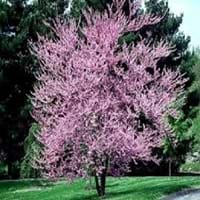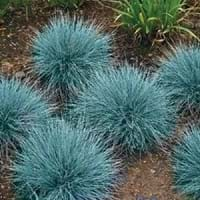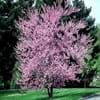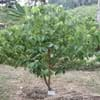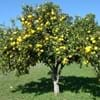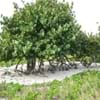Life Span
Perennial
Perennial
Origin
Northeastern United States, Mid-Atlantic United States, Southeastern United States, North-Central United States, Central United States, South-Central United States, Canada
World/Pandemic, North America, Europe, Russia/Siberia, Asia
Types
Not Available
Blue fescue, Large Blue fescue
Habitat
Alpine Meadows, shaded woods
Moist Soils, Rocky areas, Well Drained
USDA Hardiness Zone
4-9
4-8
Sunset Zone
1a, 1b, 2a, 2b, 3a, 3b, 7, 8, 9, 10, 11, 12, 13, 14, 15, 16, 17, 18, 19, 20
1a, 1b, 2a, 2b, 3a, 3b, 4, 5, 6, 7, 8, 9, 10, 11, 12, 13, 14, 15, 16, 17, 18, 19, 20, 21, 22, 23, 24
Habit
Oval or Rounded
Clump-Forming
Flower Color
Red, Purple, Violet
Not Available
Flower Color Modifier
Bicolor
Bicolor
Fruit Color
Brown, Chocolate
Not Available
Leaf Color in Spring
Purple, Plum
Blue Green, Gray
Leaf Color in Summer
Green, Dark Green
Light Green
Leaf Color in Fall
Yellow, Yellow green
Blue Green, Gray
Leaf Color in Winter
Not Available
Blue Green, Tan, Gray
Leaf Shape
Heart-shaped
Grass like
Plant Season
Spring, Summer, Fall
Spring, Summer, Fall, Winter
Sunlight
Full Sun, Partial Sun
Full Sun, Partial Sun
Growth Rate
Medium
Medium
Type of Soil
Clay, Loam, Sand
Loam, Sand
The pH of Soil
Acidic, Neutral, Alkaline
Acidic, Neutral
Soil Drainage
Well drained
Well drained
Bloom Time
Early Spring, Spring, Late Spring
Early Summer, Summer
Tolerances
Drought
Drought
Where to Plant?
Ground
Container, Ground
How to Plant?
Cuttings
Seedlings
Plant Maintenance
Medium
Medium
Watering Requirements
Keep the ground moist but not water-logged
Requires regular watering
In Summer
Lots of watering
Lots of watering
In Spring
Moderate
Moderate
In Winter
Average Water
Average Water
Soil pH
Acidic, Neutral, Alkaline
Acidic, Neutral
Soil Type
Clay, Loam, Sand
Loam, Sand
Soil Drainage Capacity
Well drained
Well drained
Sun Exposure
Full Sun, Partial Sun
Full Sun, Partial Sun
Pruning
Prune to stimulate growth, Remove damaged leaves, Remove dead branches, Remove dead leaves
Cut or pinch the stems, Remove dead leaves, Remove dead or diseased plant parts
Fertilizers
All-Purpose Liquid Fertilizer
Apply 10-10-10 amount
Pests and Diseases
Bacterial Canker, Verticillium Wilt
Red blotch
Plant Tolerance
Drought
Drought
Flowers
Showy
Insignificant
Flower Petal Number
Single
Single
Foliage Texture
Medium
Fine
Foliage Sheen
Glossy
Matte
Attracts
Birds
Birds, Butterflies
Allergy
Unknown
Not Available
Aesthetic Uses
Beautification, Formal Garden, Ground Cover, Showy Purposes
Ground Cover
Beauty Benefits
Not Available
Not Available
Environmental Uses
Air purification, Food for animals, Food for birds, Nesting sites for birds
Air purification, Provides ground cover
Medicinal Uses
Unknown
Not Available
Part of Plant Used
Not Applicable
Flowers, Seeds
Other Uses
Beneficial species for attracting pollinators, Used as Ornamental plant
Used as Ornamental plant
Used As Indoor Plant
No
Insignificant
Used As Outdoor Plant
Yes
Yes
Garden Design
Feature Plant, Foundation, Mixed Border, Shade Trees
Bedding Plant, Container, Feature Plant, Mixed Border, Rock Garden / Wall
Botanical Name
CERCIS canadensis 'Forest Pansy'
FESTUCA glauca 'Boulder Blue'
Common Name
Eastern Redbud, Forest Pansy Redbud
Blue Fescue, Boulder Blue Fescue
In Hindi
Forest Pansy Redbud
Boulder Blue Fescue
In German
Forest Pansy Redbud
Boulder Blau -Schwingel
In French
gainier du Canada
Boulder bleu fétuque
In Spanish
Cercis canadensis
Boulder azul de la hierba festuca
In Greek
Forest Pansy Redbud
Boulder μπλε γρασίδι φεστούκα
In Portuguese
Forest Pansy Redbud
Boulder Blue Grass festuca
In Polish
Judaszowiec kanadyjski
Boulder niebieskie trawy kostrzewy
In Latin
Forest Pansy Redbud
Hyacintho herba, lapidem fescue
Phylum
Spermatophyta
Magnoliophyta
Class
Magnoliopsida
Liliopsida
Clade
Angiosperms, Eudicots, Rosids
Angiosperms, Commelinids, Monocots
Tribe
Not Available
Poeae
Subfamily
Not Available
Pooideae
Number of Species
Not Available
Season and Care of Forest Pansy Redbud and Boulder Blue Fescue
Season and care of Forest Pansy Redbud and Boulder Blue Fescue is important to know. While considering everything about Forest Pansy Redbud and Boulder Blue Fescue Care, growing season is an essential factor. Forest Pansy Redbud season is Spring, Summer and Fall and Boulder Blue Fescue season is Spring, Summer and Fall. The type of soil for Forest Pansy Redbud is Clay, Loam, Sand and for Boulder Blue Fescue is Loam, Sand while the PH of soil for Forest Pansy Redbud is Acidic, Neutral, Alkaline and for Boulder Blue Fescue is Acidic, Neutral.
Forest Pansy Redbud and Boulder Blue Fescue Physical Information
Forest Pansy Redbud and Boulder Blue Fescue physical information is very important for comparison. Forest Pansy Redbud height is 760.00 cm and width 760.00 cm whereas Boulder Blue Fescue height is 30.50 cm and width 25.40 cm. The color specification of Forest Pansy Redbud and Boulder Blue Fescue are as follows:
Forest Pansy Redbud flower color: Red, Purple and Violet
Forest Pansy Redbud leaf color: Purple and Plum
Boulder Blue Fescue flower color: Not Available
- Boulder Blue Fescue leaf color: Blue Green and Gray
Care of Forest Pansy Redbud and Boulder Blue Fescue
Care of Forest Pansy Redbud and Boulder Blue Fescue include pruning, fertilizers, watering etc. Forest Pansy Redbud pruning is done Prune to stimulate growth, Remove damaged leaves, Remove dead branches and Remove dead leaves and Boulder Blue Fescue pruning is done Cut or pinch the stems, Remove dead leaves and Remove dead or diseased plant parts. In summer Forest Pansy Redbud needs Lots of watering and in winter, it needs Average Water. Whereas, in summer Boulder Blue Fescue needs Lots of watering and in winter, it needs Average Water.
